Assignments and ideas for professionals working with young people who want to raise awareness of and explore LGBTQ+ issues.
Part of Into the Outside
Introduction
A resource inspired by youth project Into The Outside and referring to content in the related queer youth archive: www.intotheoutside.org.uk making use of the rich collection of images, artwork, voices, creative writing and archive material.
The late twentieth and early twenty-first centuries saw a number of key political moments for the LGBTQ community including the first Gay Pride marches, Section 28, the reduction of the age of consent, the Civil Partnership Act and the Equality Act.
Engaging with LGBTQ+ history helps today’s young people find out about the lives and experiences of other young people who identified as LGBTQ+ in the past – why they protested, what their social life was like, how they fitted in, and how easy or hard it was for them coming out.
It enables young people to explore, make sense of, and value the legacy of their cultural heritage, and build awareness of LGBTQ issues such as representation and equality, creating an opportunity to engage all young people in debate, challenge perceptions, and promote acceptance and understanding.
The purpose of these activities is to recognise the value of history – how it informs the present, and affects how we understand and behave towards others.
The activities promote awareness of archives, and encourage young people to understand that heritage and history is made up of a range of different people’s voices, experiences, and stories.
I. Keeping Archives Alive
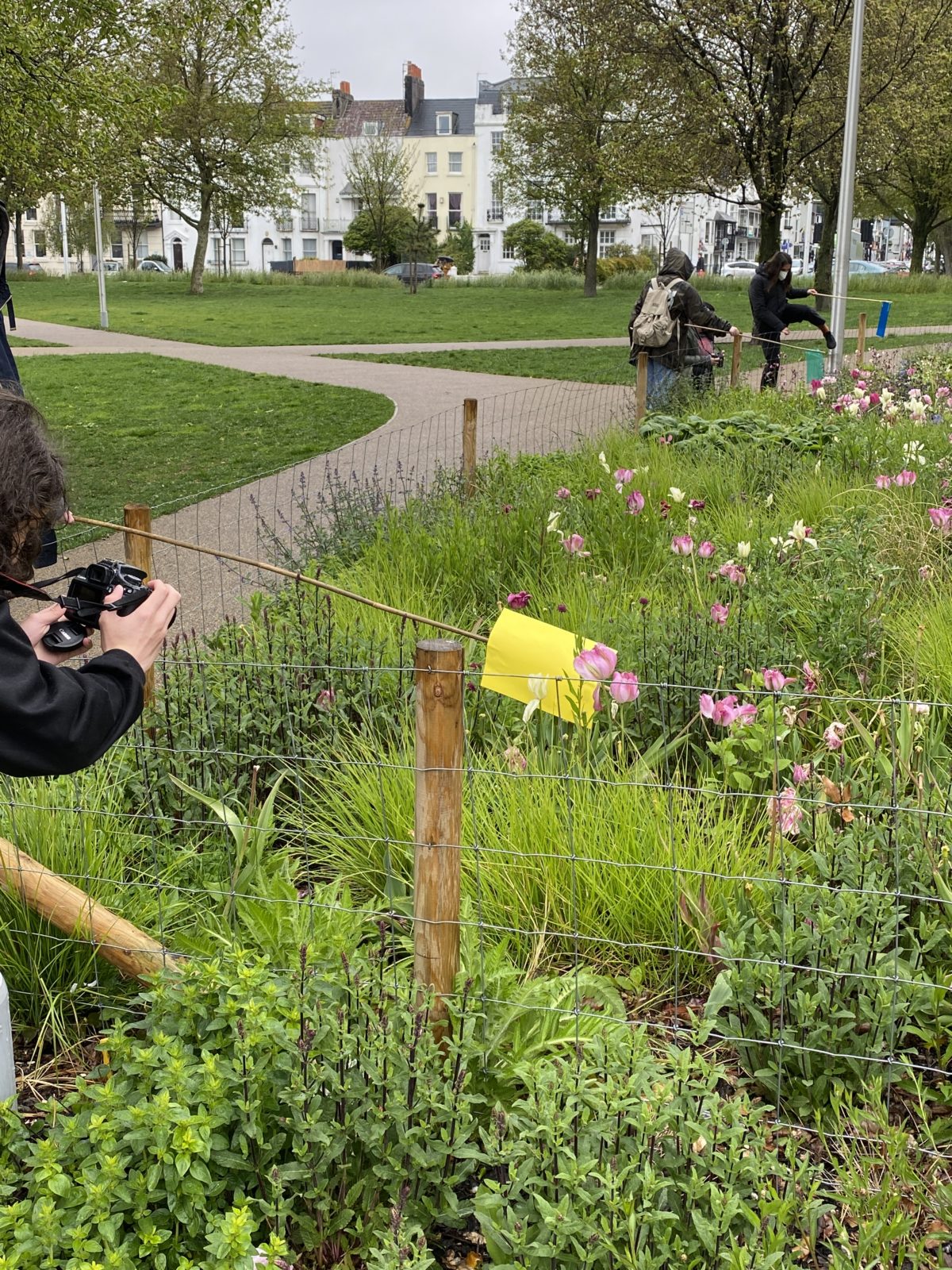
Photography Activity
Look at, Read, Listen to Queer in Brighton book excerpts
- Greg Cox (emotional well-being and the politics around same sex marriage)
- Charlie Wood (thinking about families)
- Elle (Coming out and thinking about the significance of representation and style)
- Sabah Choudhary (Trans Experience, cultural difference and multiple oppression)
- Split the group into four. Each group is asked to study one of the selected extracts, then discuss and write down what they find interesting about their extract.
- Ask each group to write a message to the person in the archive as a response to their story. It could be a message of support, or a question, or an observation about something they have learned from reading the story.
- Write this message on an A3 sheet of card. Make sure the text is written large, and in black pen. If the message is too long for one card – then use two cards and have two people hold the card. It is important that the message is readable.
- Make a portrait of one person (or two depending on the length of the message) holding the card with the message. Think about the background for the photograph. Make sure that the person/people holding the card pose so the message can be read, and make the image as interesting as possible. Consider how the message is being held, where the person/ people are standing with the message.
- Once the group has finished, print out or download their final images and discuss them together
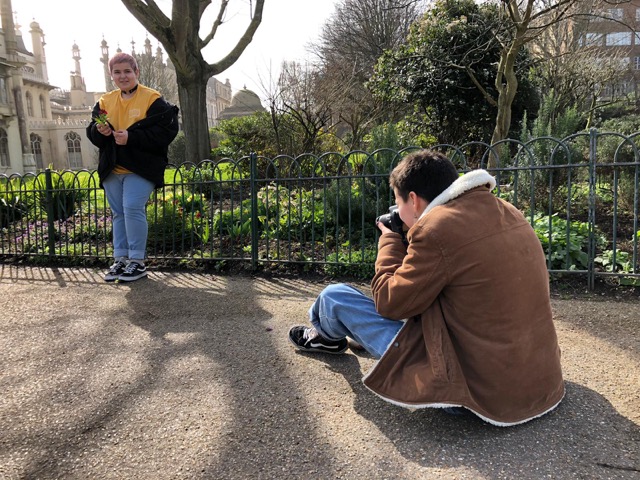
II. Out of the Archive
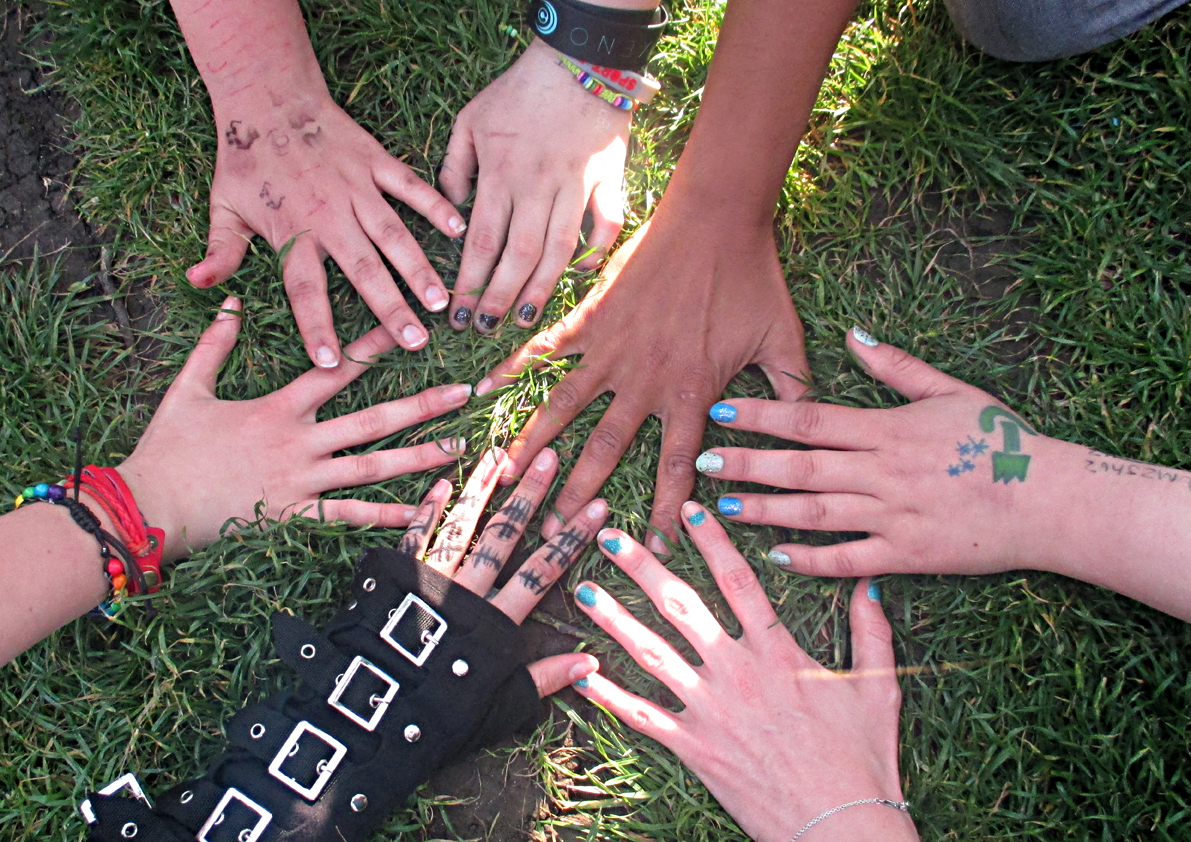
Photography Activity
Look at, Read, Listen to Queer in Brighton archive images
- Split the group into small groups. Look at the images and discuss what the images suggest the LGBTQ+ community have had to protest for OR against around their identity.
- Make a list of the different ways people have protested or made a stand (thinking in particular about placards and banners).
- Each group is asked to create three placards. Think about something you would like to change in the world around LGBTQ+ rights or issues of gender. This is your chance to say something in protest on your placard. Make your placard easy to read so take the time to think about exactly what you’d like to be on the placard. You might want to add drawings or symbols too.
- In your group hold your placard/s in a pose that replicates a gesture of protest or activism. If your placards are about different issues hold a pose for each placard/banner. Ask one person to photograph this moment for posterity.
- Once the group has finished, print out or download their final images and discuss them together. Discuss:
- The different issues raised
- Any similarities in issues that the group has chosen
- Which banners are the most effective in conveying their messages
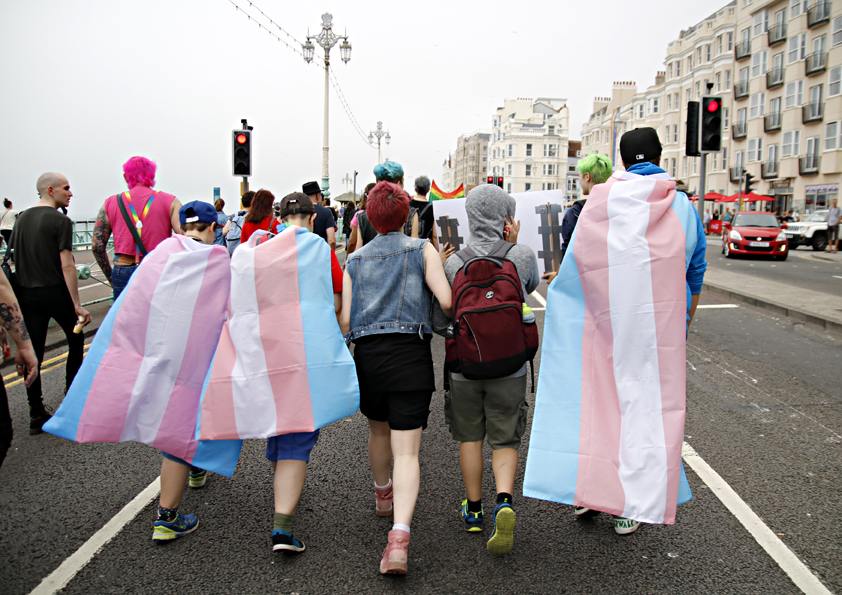
III. Messages of Support

Discussion Activity
Look at, Read, Listen to Queer in Brighton book excerpts
- Greg Cox (emotional well-being and the politics around same sex marriage)
- Charlie Wood (thinking about families)
- Elle (Coming out and thinking about the significance of representation and style)
- Sabah Choudhary (Trans Experience, cultural difference and multiple oppression)
- Split the group into four. Each group is asked to study one of the selected extracts, then discuss and write down what they find interesting about their extract.
- Ask each group to write a message to the person in the archive as a response to their story. It could be a message of support, or a question, or an observation about something they have learned from reading the story.
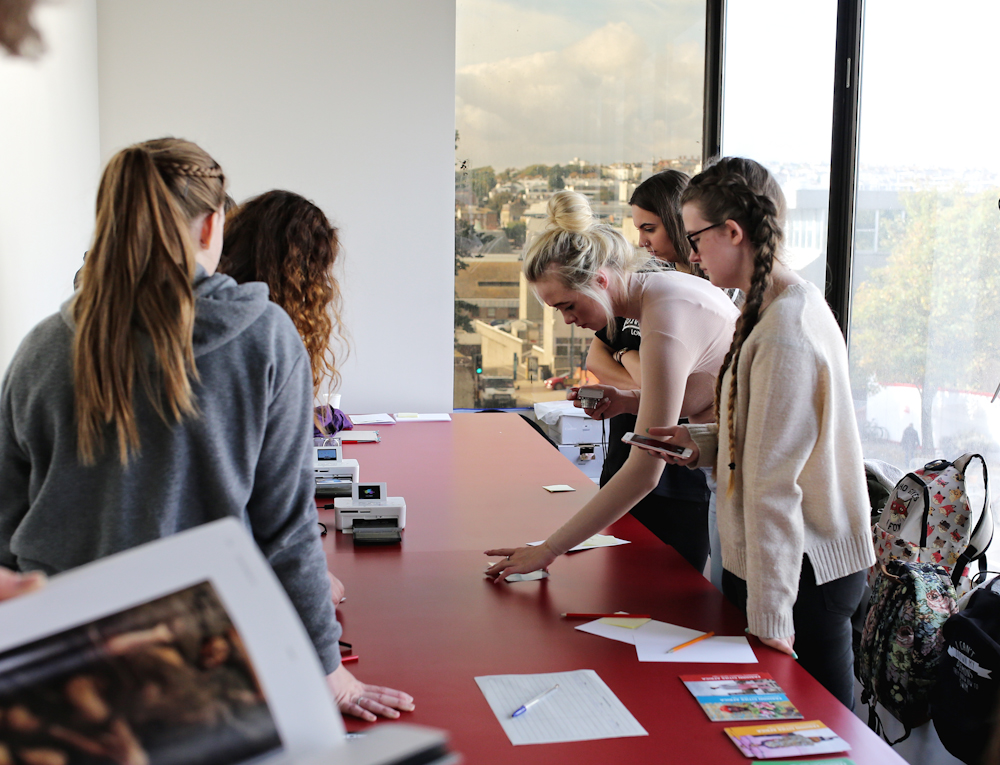
IV. I Stand For…
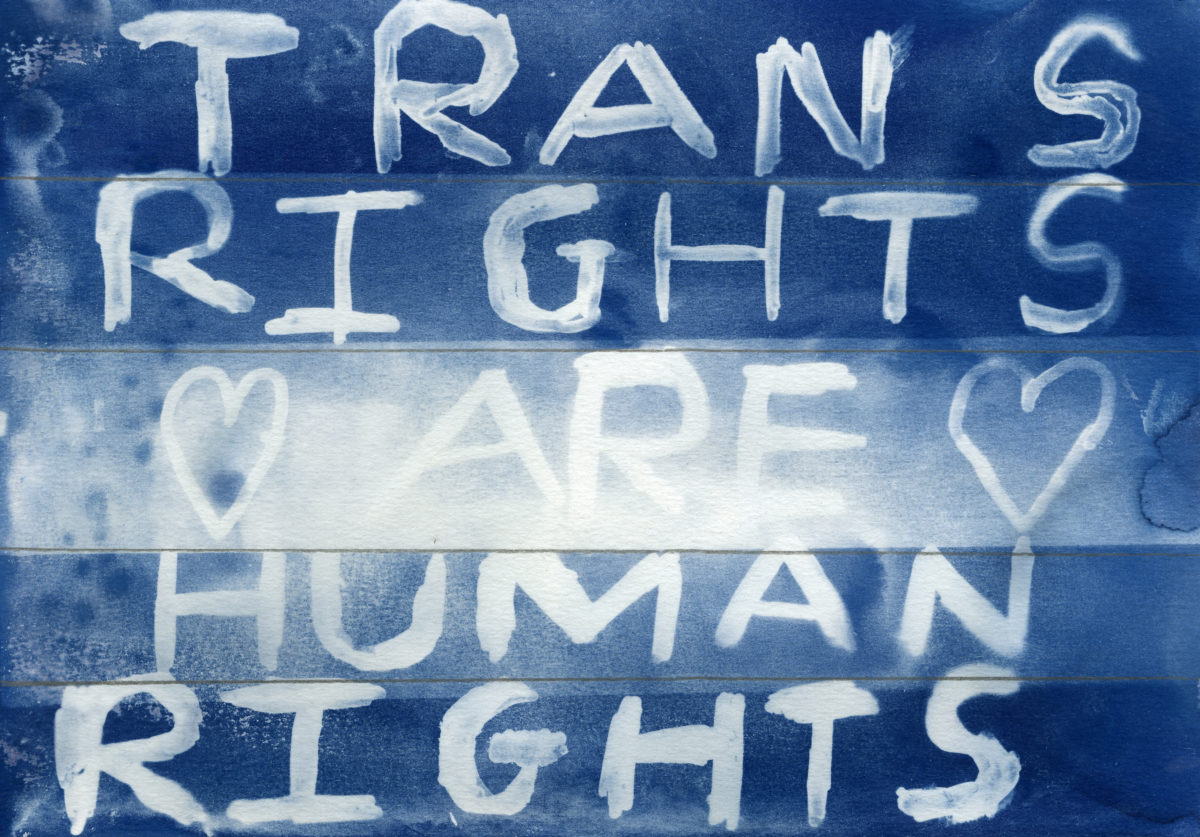
Creative Writing Activity
The purpose of this activity is to introduce young people to the concept of activism and standing up for what they believe.
- Ask each person in the group to stand up, one at a time, and say something that they stand for. Here are some examples:
“I stand for free university education for all.”
“I stand for the voting age to be lowered to 16 years old.”
“I stand for a three day weekend.”
After each person has said what they stand for, those who agree with them should stand up too. Then all sit back down. Ideally, there is to be no discussion in between each person.
When everyone in the group has stood up and said what they stand for, discuss with the group what it felt like to stand up and speak out, and how it felt when others did or did not stand with them.
- Ask everyone to write their own “I Stand For” poem about a topic they feel passionately about. This could also be done in pairs or in small groups as a “We Stand For” poem. The poem should convey a passion for the topic and the purpose of the poem should be to convince others to feel passionately about this topic too.
When participants have a first draft of the poem, ask them to read it to another person/ pair/group and to give each other feedback on how it could be made more even persuasive. Give more time to implement feedback. When the poems are finished, invite participants to read their poems to the whole group.
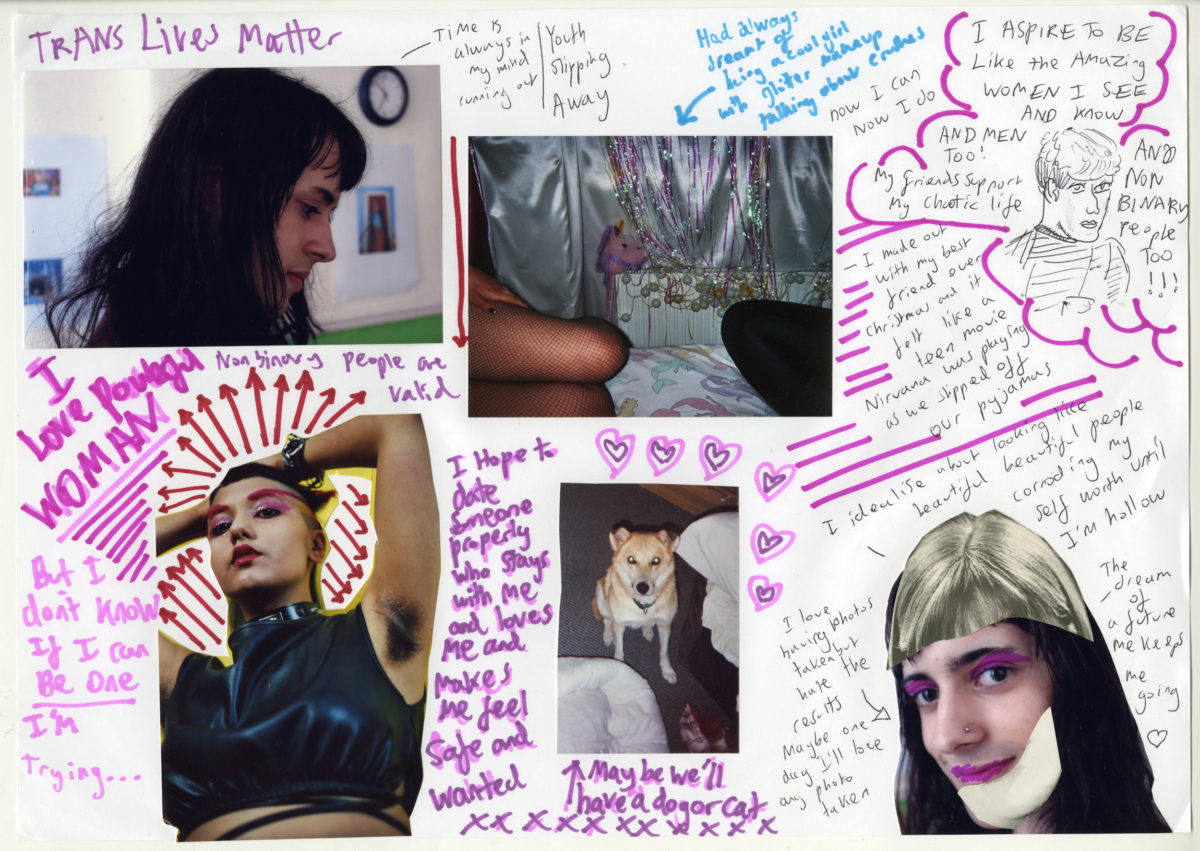
V. My Personal Archive
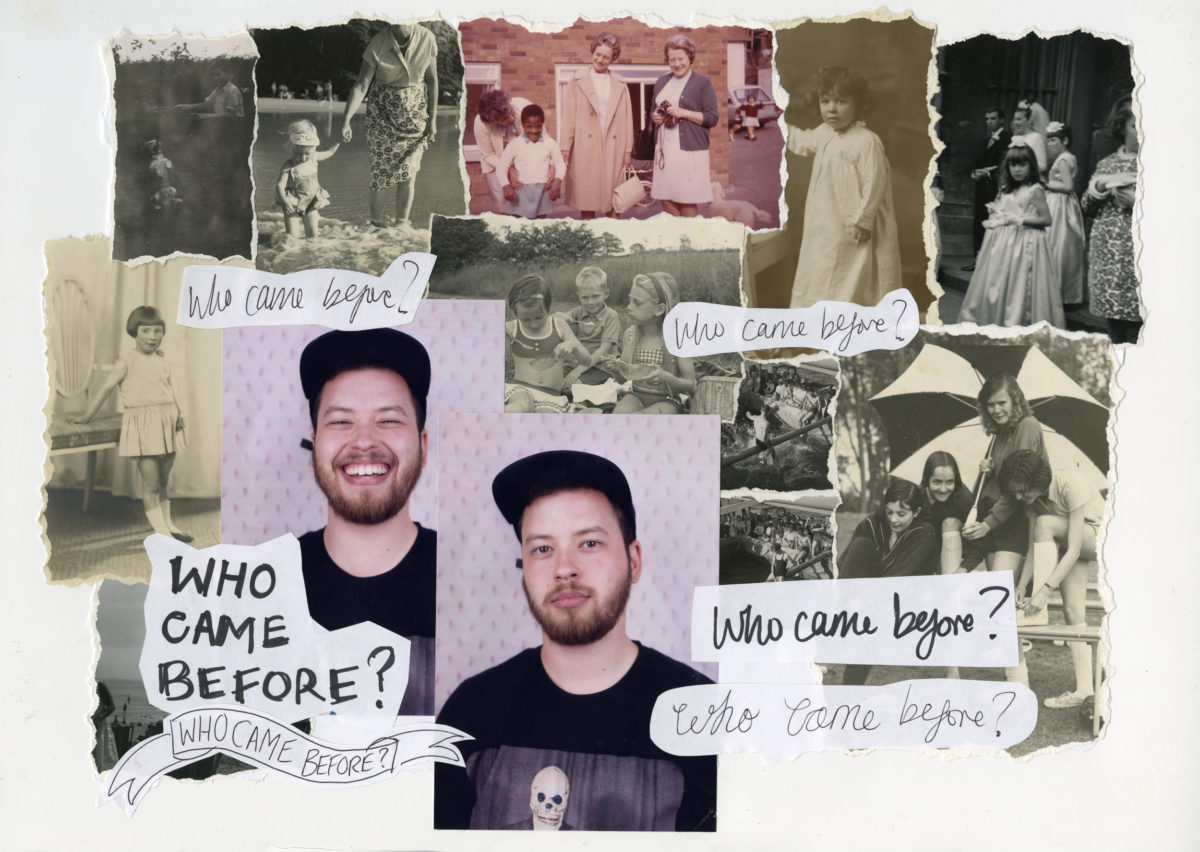
Creative Writing Activity
Read Inside My Archive by Dean Atta
- Introduce the idea of an archive, or a personal collection. Ask participants to work in pairs to think about what physical objects would be important to keep for an achievement of their life. Consider which items that are precious or meaningful or might represent specific significant moments in their lives.
- Ask the group to make a list of their selected archive items with descriptions, list them in chronological order from the most recently acquired to the oldest items.
- Ask the group to re-organise and edit their list as a poem. Suggest they pick items with some story or connection that the reader could work out by reading their poem.
About the Contributor
Resources developed by Helen Cammock and Dean Atta for Into The Outside.
Helen Cammock explores social histories through film, photography, print, text, song and performance. She is motivated by her commitment to questioning mainstream historical narratives around blackness, womanhood, wealth, power, poverty and vulnerability. Mining her own biography in addition to the histories of oppression and resistance, multiple and layered narratives, reveals the cyclical nature of histories.
Cammock was the joint recipient of The Turner Prize 2019 and the 7th Max Mara Art Prize for Women.
Dean Atta is a British author hailing from London and living in Glasgow. He is a Malika’s Poetry Kitchen member, National Poetry Day ambassador and LGBT+ History Month patron. Dean’s poems have been highly commended by the Forward Prizes for Poetry and shortlisted for the Bridport Poetry Prize and Oxford Brookes International Poetry Competition. His books have been praised by the likes of Bernardine Evaristo, Benjamin Zephaniah and Malorie Blackman.
Into The Outside
A creative collective of young people aged 13-25 identifying as LGBTQ+ re-examined Brighton & Hove’s rich LGBTQ+ history, supported by artist Helen Cammock and creating a new archive of queer youth experiences.
A heritage-learning project funded by the Heritage Lottery Fund delivered by Photoworks in collaboration with Brighton & Hove Libraries Services, the Mass Observation Archive and the East Sussex Record Office. Many other organisations from across the city were also involved including local schools, Brighton Museum & Art Gallery, Queer in Brighton and Allsorts Youth Project.

